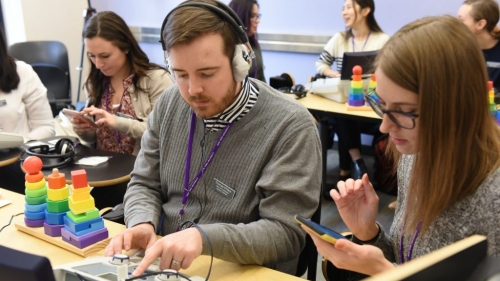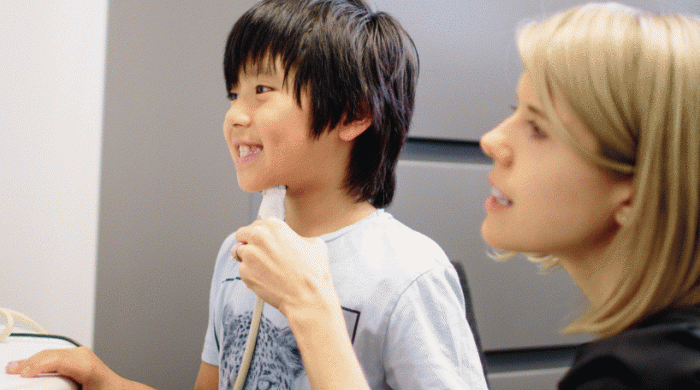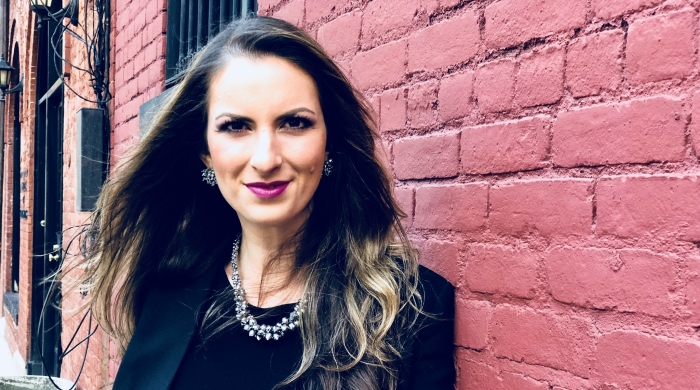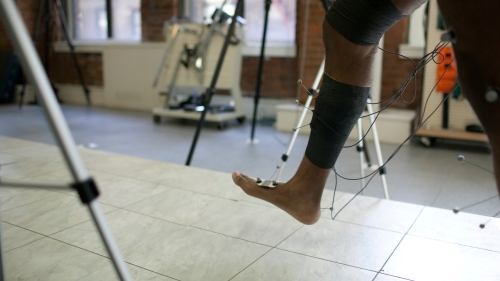Only a quarter of adults know about dysphagia, a fraction of those aware of insomnia and vertigo.

Getty Images: jeangill
When it comes to health conditions, some disorders get all the attention. Vertigo, for example, is common in media and has a popular Hitchcock film to its name. Others, like dysphagia, a disorder in which swallowing is impaired, are largely unknown.
In a new study testing public knowledge of a range of disorders, dysphagia was unfamiliar to the public, with only 25 percent of respondents knowing about it, despite its prevalence.
“Swallowing is something that most people take for granted—yet approximately 6.5 percent of Americans report some difficulty with swallowing. This number is much higher in adults over 65. When someone has dysphagia, food and liquid can go into the lungs and cause pneumonia—which in some cases can be fatal,” says lead author Sonja M. Molfenter, associate professor of communicative sciences and disorders at NYU Steinhardt School of Culture, Education, and Human Development.
To gauge public awareness of dysphagia, Molfenter and her co-authors surveyed 2000 adults about their knowledge of four disorders—dysphagia, insomnia, vertigo, and ataxia (a lack of muscle control)—including the health impacts of the disorders and which healthcare professional would be appropriate for treatment.
Their results, published in the journal Dysphagia, found that only 25 percent of respondents indicated that they knew what dysphagia was, compared with 99 percent and 87 percent who said they were familiar with insomnia and vertigo, respectively. Only 18 percent indicated familiarity with ataxia.

It is our hope that this survey data can help our team and others focus efforts on advocacy and awareness to support early intervention, improved infrastructure, increased research funding, and more equitable healthcare access.
Similar trends held when respondents correctly identified impairments associated with each (44 percent for dysphagia compared with 99 percent for insomnia, 94 percent for vertigo, and 22 percent for ataxia). When selecting an appropriate healthcare provider for each condition, respondents answered correctly 47 percent of the time for dysphagia, 74 percent of the time for insomnia, 56 percent for vertigo, and 36 percent of the time for ataxia.
When tasked with identifying three health care impacts of each, only 4 percent were able to identify all of them for dysphagia (malnutrition, pneumonia, decreased quality of life), while 60 percent were able to answer correctly for insomnia, 27 percent for vertigo, and 16 percent for ataxia.
“This study confirms that there is a gap in public awareness for dysphagia, as opposed to conditions like insomnia or vertigo,” says Molfenter. “It is our hope that this survey data can help our team and others focus efforts on advocacy and awareness to support early intervention, improved infrastructure, increased research funding, and more equitable healthcare access.”
This research was co-authored by Aaron Johnson of NYU Langone Health; NYU Steinhardt student researchers R. Brynn Jones-Rastelli, Claire Crossman, and D’manda Price; and undergraduate students Arie Barfield, Drew Cooks, Kaiyn Jackson, and Journee C. Robinson, who conducted research during the Summer Health and Academic Research Experience in Communicative Sciences and Disorders (SHARE-CSD) at NYU. SHARE-CSD is supported by a grant from the National Institute of Deafness and Other Communication Disorders, part of the National Institutes of Health (R25DC020417).
Related Articles
NYU Funds Interdisciplinary Research on AI Tools for Speech Therapy
The funding will support creating AI-driven tools that offer targeted feedback for clinicians to better support speech therapy for children.
New Clinical Experience for Students
From adults with autism to bilingual preschoolers, CSD’s community partnerships introduce practicum students to a range of real-world experience.
Ana Flavia Zuim Conducts Forensic Voice Analysis for Criminal Cases
Drawing on her experience as a musical director, vocologist, and music associate professor of vocal performance at NYU Steinhardt, Zuim uses voice science to identify both singers and speakers—and help solve crimes.
Related Programs
Related Department

Communicative Sciences and Disorders
665 Broadway, 9th floor
New York, NY 10012
Phone: 212-998-5230





